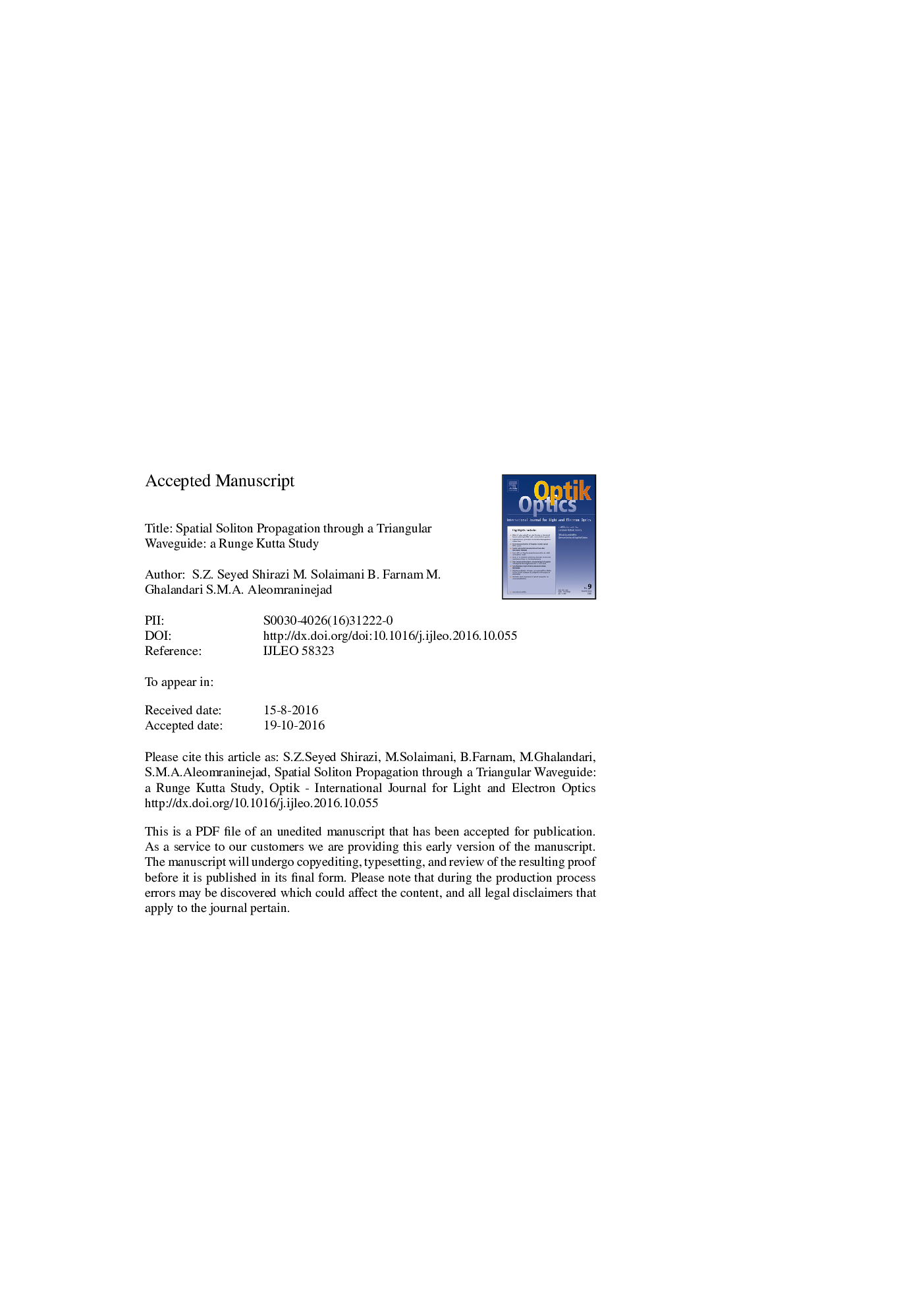| Article ID | Journal | Published Year | Pages | File Type |
|---|---|---|---|---|
| 5026153 | Optik - International Journal for Light and Electron Optics | 2017 | 13 Pages |
Abstract
In this work, we have studied a traveling soliton through a triangular refractive index waveguide. Our calculations have been performed with a 4th order Runge Kutta method which we have presented the algorithm. Then we have checked the numerical accuracy and found it desirable. In our investigations, the light beam inside a waveguide have been oscillated which perfectly agree with the so-called “swing effect”. In comparison with a soliton with amplitude Q = 1, for soliton amplitude Q = 2 a shorter oscillation period have been observed. In the meantime, for lower waveguide widths, soliton have had shorter oscillation period. Finally, for η â  0, the soliton oscillate with higher amplitude and it recede from center of waveguide which is not desirable.
Keywords
Related Topics
Physical Sciences and Engineering
Engineering
Engineering (General)
Authors
S.Z. Seyed Shirazi, M. Solaimani, B. Farnam, M. Ghalandari, S.M.A. Aleomraninejad,
